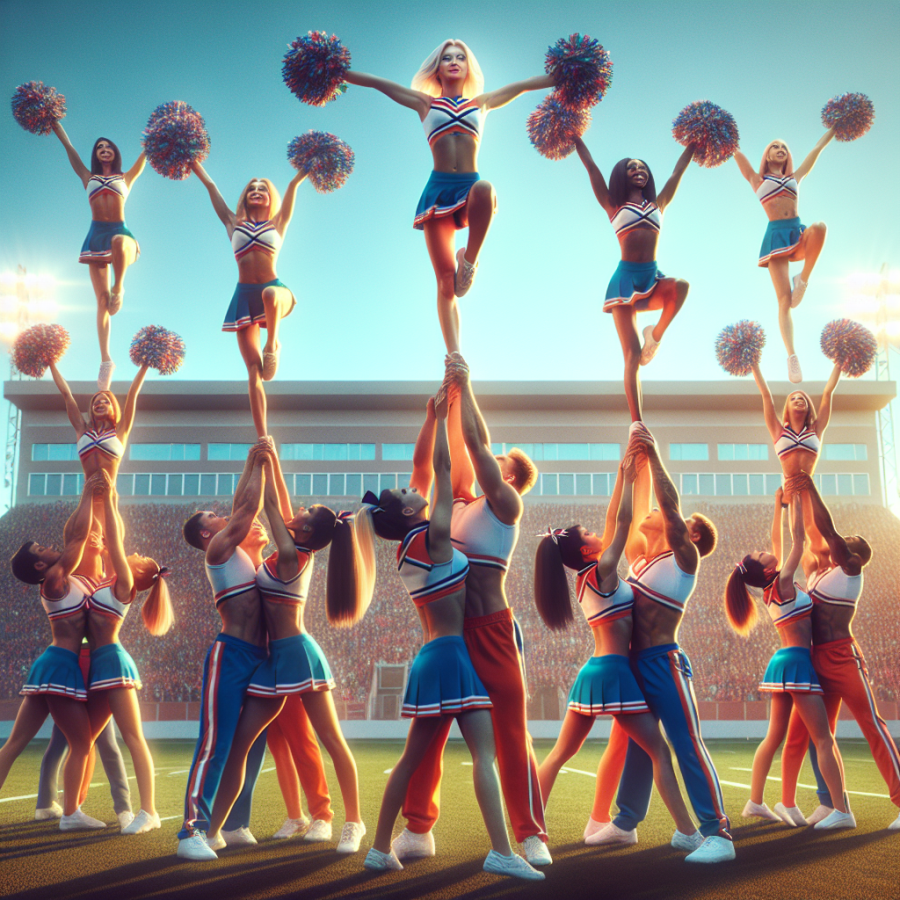Harnessing Athleticism and Performance: The Evolution of Cheerleading Competitions
Cheerleading has evolved dramatically from its origins as a sideline spectacle to a highly competitive sport that demands peak physical performance and intricate skill sets. This transformation is best exemplified by the emergence of cheerleading competitions that now showcase the athleticism and precision of the athletes involved.
As cheerleading has catapulted into the competitive arena, the nature of events and performances has advanced significantly. Teams no longer solely lead chants or support other sports teams; they engage in intense routines that include stunting, tumbling, dance, and cheer. These routines are meticulously choreographed and synced to music, creating a dynamic experience for both the performers and audience.
One key aspect of modern cheer competitions is the emphasis on athleticism. Cheerleaders today are often compared to gymnasts due to their impressive strength, flexibility, and acrobatic abilities. The stunts performed during competitions can involve high-flying basket tosses, complex pyramids, and partner lifts that require absolute precision and unwavering trust among team members. Moreover, the tumbling aspect has integrated skills such as round-offs, back handsprings, and full-layout twists, drawing stark parallels with floor routines in artistic gymnastics.
The scoring system in cheerleading competitions has been refined to reflect the difficulty and execution of routines. Judges look for synchronization, the difficulty of stunts, the sharpness of movements, tumbling techniques, and the overall effect of the performance. This has encouraged teams to push the boundaries and strive for innovation while ensuring the safety and consistency of their routines.
To support this high level of competitive cheerleading, training regimens have become progressively complex. Cheer athletes undergo rigorous physical conditioning, strength training, and flexibility exercises. They also practice multiple times per week for several hours, perfecting not only their individual skills but also the crucial timing and coordination required for team stunts.
The environment at cheerleading competitions is electric, with teams providing energetic and visually stunning performances that captivate audiences. These events are not only a test of physical prowess but also of team unity, artistic expression, and performance under pressure. The crowd's enthusiasm, combined with the competitors' adrenaline, contributes to the thrilling atmosphere that defines these contests.
Additionally, the evolution of cheerleading competitions has also facilitated the growth of specialized training facilities, professional coaches, and cheerleading camps that focus exclusively on competitive cheer. This professional infrastructure continues to raise the bar, spurring further advancement in training techniques and safety standards.
Read also:
Swinging for the Fences: The Rise of English Baseball
Teamwork and Dedication: How Competitive Cheerleading Builds Winning Attitudes
Cheerleading has long graduated from the sidelines to the center stage, revealing its true competitive nature and the rigorous discipline it demands. At the heart of this evolution is the recognition of cheerleading as a sport that fosters not only physical fitness but also invaluable life skills. Among these, teamwork and dedication rise to the forefront as fundamental elements in building a winning attitude both on and off the mat.
In the dynamic world of competitive cheerleading, athletes learn the importance of relying on each other to achieve a common goal. Every stunt and routine is the result of countless hours of synchronized practice, where each team member's role is crucial to the group's success. There's no room for solo stars in a cheer squad; it's the combined effort of flyers, bases, and spotters that creates the breathtaking performances that draw crowds and accolades. This intense interdependence instills a profound sense of unity and trust among cheerleaders, teaching them the value of cooperation and mutual support.
The dedication required in competitive cheerleading is unparalleled. Cheer athletes dedicate themselves to rigorous training schedules, balancing their sport with academic and sometimes work commitments. The relentless pursuit of perfection in every tumbling pass, jump, and cheer is a testimony to their unwavering commitment. This sheer determination is a driving force that propels cheerleaders to push beyond their limits, embrace discipline, and continuously strive for improvement. The resilience developed in the face of intense physical and emotional challenges fosters a mindset geared towards conquering obstacles and achieving excellence.
Moreover, the competitive aspect of cheerleading equips athletes with the ability to perform under pressure. Learning to maintain composure and deliver flawless routines in front of judges and large audiences builds confidence and poise that are essential in high-stakes environments. The experience of competing also teaches cheerleaders the grace of sportsmanship – knowing how to celebrate victories humbly and accept defeats gracefully, always with an eye towards growth and learning.
Ultimately, the combination of teamwork and dedication cultivated in competitive cheerleading lays a firm foundation for a winning attitude. Cheerleaders carry these attributes forward into their future endeavors, be it in their studies, careers, or personal lives. The spirit of collaboration and relentless pursuit of goals that they developed on the mat becomes their competitive edge, demonstrating that the lessons learned through competitive cheerleading extend far beyond the trophies and titles.




